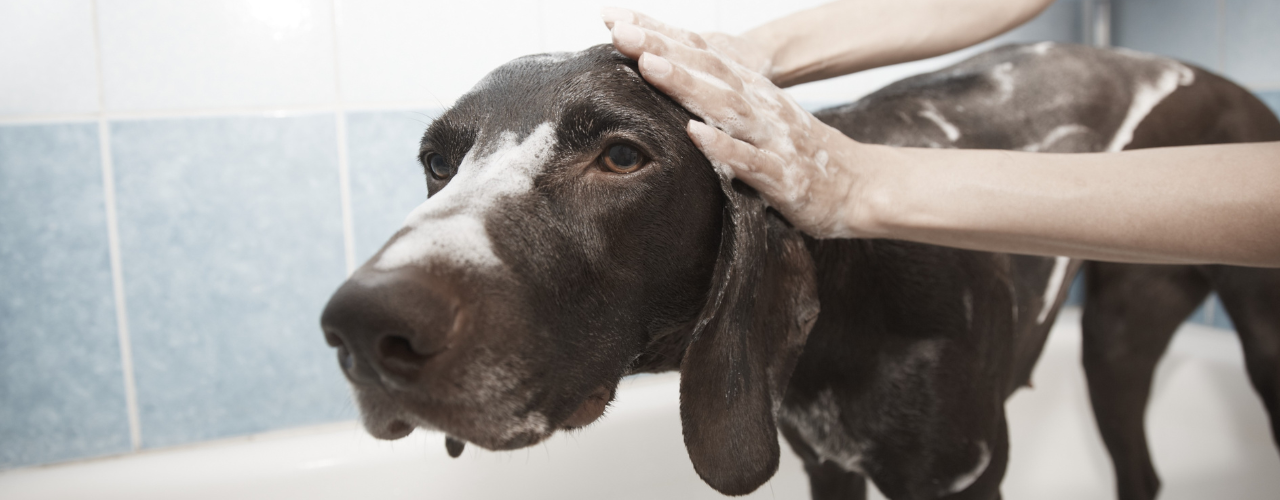If your dog just loves jumping into the muddiest puddles or doesn’t even like getting their paws wet outside, we all know that regular washes are essential to the cleanliness of your pet and your home. It can also help to reduce your dog’s scratching and even some mild skin conditions.
We know from our own damp experiences that bathing even a medium-sized, short-haired hound can turn into a task that demands thorough preparation and maybe even a wetsuit. But we hope these tips make the task a happier and easier one for both you and your dog. There can’t be much worse than turning a straightforward duty into something your dog dislikes or even comes to fear. Getting your dog used to bath time from as early an age as possible will teach them that it’s nothing to be scared of, and keeping your tone as calm, reassuring and upbeat as possible will help too.
- You want to make sure you’re using the right shampoo product for your pooch. Your vet will be able to give you advice on what would be best.
- It’s also a great idea to brush your dog first to lessen the amount of fur that could come loose during the wash thereby helping to cut down on time and potential mess. Dry fur can also be easier to detangle than wet reducing your dog’s discomfort.
- Preparation is key! Make sure the tools you need are within easy reach, especially if your dog is an escape artist. You want to remain close to the bath or sink so your sopping pet doesn’t make too much of the surrounding area just as wet too! Also, make sure the towels are close by for when bath time is over.
- Use an old towel in the bottom of the bath or sink so that your dog’s paws can get some traction and help them feel more stable. A bathmat designed for our feet might not work for theirs.
- When lathering your dog, work from their neck down their back, tummy and legs, following the direction of their fur, making sure you work through their fur down to the skin. Follow this method when rinsing too.
- Try and towel-dry your dog while they are in the bath or sink, as your dog’s instinct will be to shake themselves dry, making the splash zone much bigger! Getting rid of as much excess water as possible will help reduce the excess moisture deposited around the house afterwards!
- A second dry towel can be used once your dog is out of the bath or sink. Dry their head as much as possible and take care around their sensitive ears. Of course, nothing is going to stop the inevitable and your dog will shake themselves once they’ve escaped your clutches, but at least you’ve done what you can!
